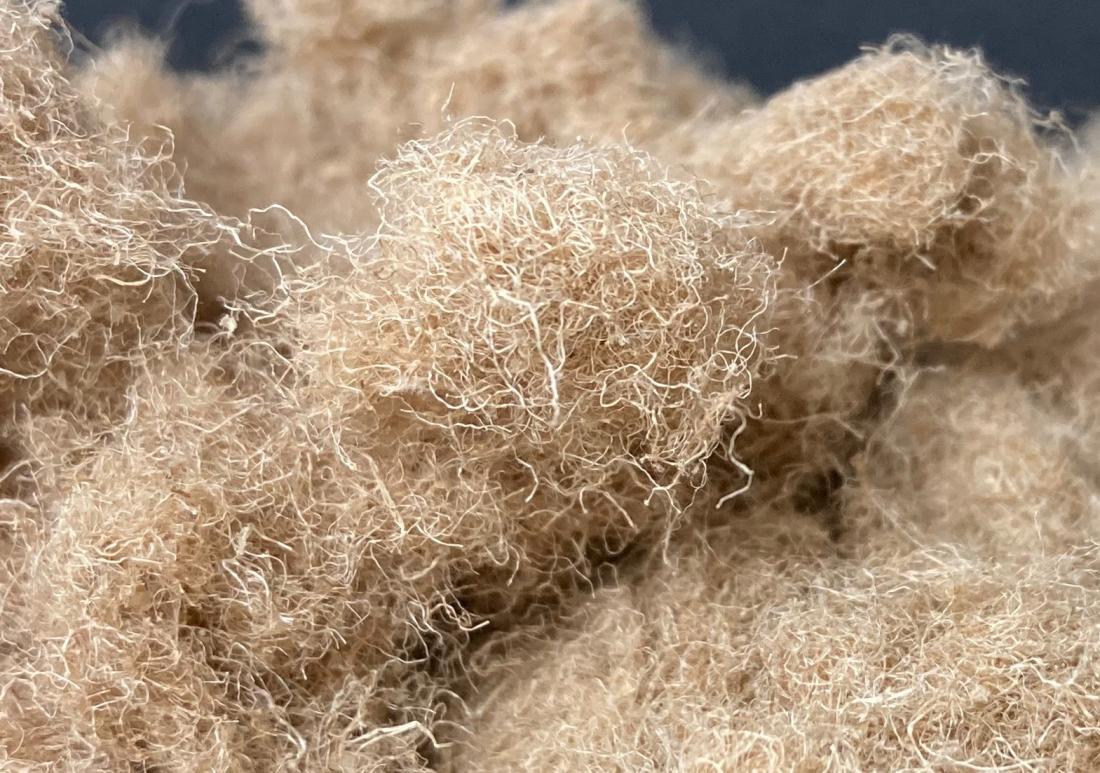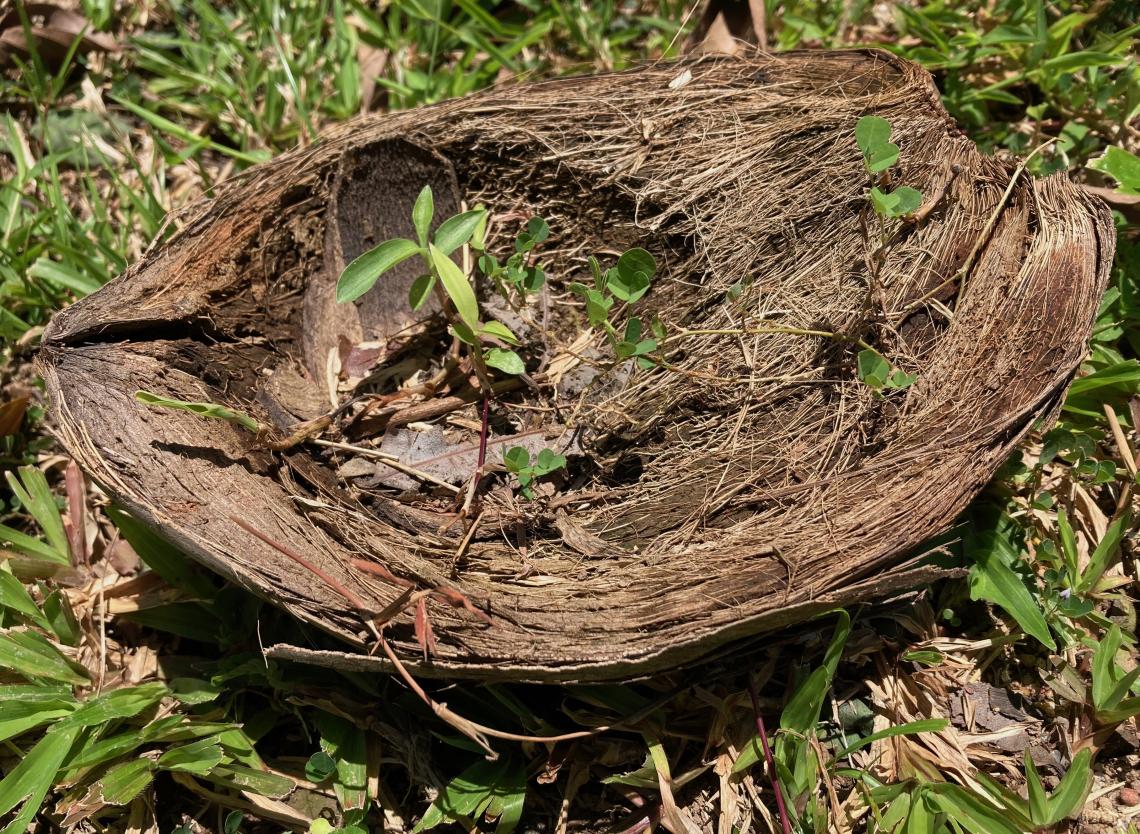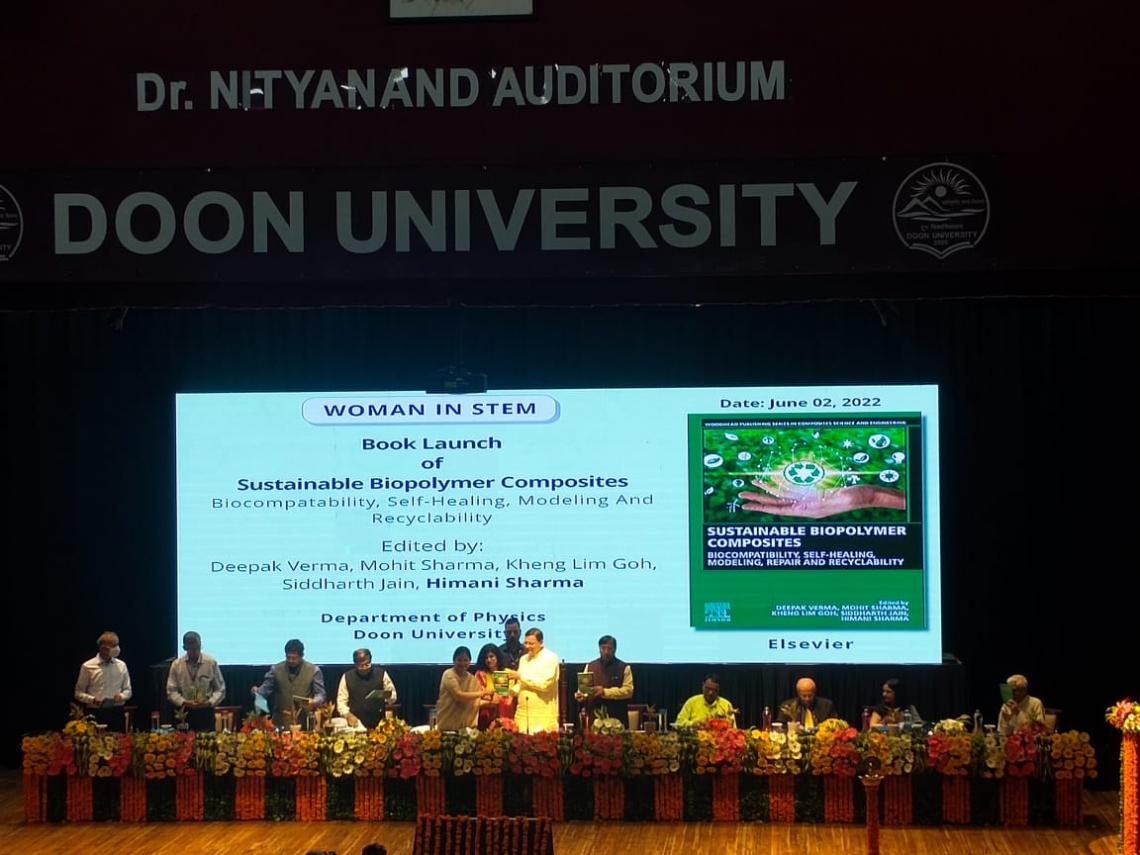Bagasse fibres
Coconut husk
Bagasse fibers are the fibrous residue that remains after sugarcane stalks are crushed to extract the juice. They are a byproduct of the sugarcane industry but they can also be used to make paper, packaging materials, and biodegradable plastics, textiles and polymer composite materials, all in the name of sustainability and as eco-friendly alternative to the traditional materials.
Coconut husk fibers, also known as coir fibers, are the fibrous material found between the hard, internal shell and the outer coat of a coconut. These fibers are strong, durable, and resistant to saltwater, making them ideal for a wide range of applications. Coconut husk fibers are commonly used for making rope, twine, doormats, brushes, and various other household and agricultural products. Like Bagasse fibres, coconut husk fibers can be a low cost sustainable alternative to synthetic fibers in the production of natural fiber-reinforced polymer composites for various applications.
Recently, Verma Deepak, hailed from Graphic Era Hill University (India), and his team of international researchers, have developed a method using a blend of coconut husk (COIR) and bagasse fibers, together with calcium carbonate, for reinforcing epoxy composite materials. The novel part of this method is the treatment of the fibers with a chemical to make the composite stronger and less likely to absorb water, thus enhancing the mechanical and thermal properties of the fibres. Upon evaluating the Bagasse/COIR reinforced epoxy composite material for its mechanical strength and structure when exposed to high temperatures, Verma and his team found that the treated composite was much stronger and could handle more weight compared to untreated natural fibres reinforcing the resin composite. The treated fibre reinforced composite also provides for enhanced heat resistance to failure under high temperature.
The findings from this study has been published in the journal called Sustainability (Verma et al., 2023). For further details please see https:// doi.org/10.3390/su15021686
The novel method was the results of several years of experimentation as part of the team's key mission to solve the natural fibre problem of tendency to absorb moisture and degrade quickly. Verma and his team became interested in this area when they were reviewing the literature on the hydrophilicity of natural fibres, which makes the mechanical properties of the composite materials low. From the literature, they learnt that to improve the adhesion of these materials to the matrix, the fibres need to be treated chemically or physically to increase their hydrophobicity. They have published the review of the hydrophilicity topic in the Journal of Natural Fibres (Verma et al., 2020), with a focus on on how to improve the mechanical properties of polymer-based composite materials by treating the surfaces of natural fibers and natural particles. The review paper discussed the physical properties of these materials, the different chemical treatments available, how to process them, and the mechanical properties of the composite materials. Verma and his team then set out to develop a novel method to improve the natural fibre mechanical properties and overcome the hydrophilicity limitation by treating the fibers with chemicals like Alkalization/Mercerization. The study has been reported in the Journal of Composites Science (Verma and Goh, 2021). For further details about the findings of the effects on the fibers and how it can improve the mechanical properties of the composites made from them see https://doi.org/10.3390/jcs5070175. Importantly, Verma and his team has also managed to form a community of researchers with a focussed mission: to collaborate to study the wider implications of the hydrophilicity problem in natural fibres. The knowledge of this subject has been published in an edited book (Verma, 2021). This book was launched on 2 June 2022 at an event at Doon University by the chief minister, CM Pushkar Singh Dhami, in India. For further information about this event, see https://garhwalpost.in/dr-himani-sharmas-book-on-sustainable-biopolymer-...
Launch of 'Sustainable Biopolymer Composites' Book
The Bagasse/COIR reinforced epoxy composite team comprised Verma Deepak, who leads the study and who is currently working for his PhD degree in Chulalongkorn University (Thailand), Dr Manunya Okhawilai (Deepak's PhD supervisor at Research Unit in Polymeric Materials for Medical Practice Devices, Chulalongkorn University), Dr Mohit Sharma (Institute of Materials Research and Engineering, A*STAR) and Dr Kheng Lim Goh, an Associate Professor/Reader in Materials Technology from Newcastle University in Singapore.
Professor Seeram Ramakrishna, Everest Chair at National University of Singapore, co-director of NUS Nanoscience and Nanotechnology Initiative (NUSNNI), Head of the Centre for Nanofibers and Nanotechnology, and Chair of the Circular Economy Taskforce, an advisor to the team, lauded Verma Deepak and the team for the success in coming up with the novel approach to develop the Bagasse/COIR reinforced resin composite material. "I am very pleased that the team has succeeded in creating the novel approach to make the composite material which will find low carbon applications in the construction and automotive industries. The novel approach to solving the hydrophobicity problem is step-change. It could also be applied to other natural fibres vying for use as alternative fibres to the traditional glass and carbon fibres." Professor Ramakrishna remarked.
References
VERMA, D. & GOH, K. L. 2021. Effect of Mercerization/Alkali Surface Treatment of Natural Fibres and Their Utilization in Polymer Composites: Mechanical and Morphological Studies. Journal of Composites Science, 5.
VERMA, D., GOH, K. L. & VIMAL, V. 2020. Interfacial Studies of Natural Fiber-Reinforced Particulate Thermoplastic Composites and Their Mechanical Properties. Journal of Natural Fibers, 1-28.
VERMA, D., OKHAWILAI, M., GOH, K. L. & SHARMA, M. 2023. Thermomechanical Analyses of Alkali-Treated Coconut Husk-Bagasse Fiber-Calcium Carbonate Hybrid Composites. Sustainability, 15.
VERMA, D. S., MOHIT; GOH, KHENG LIM ; JAIN, SIDDHARTH ; SHARMA, HIMANI (ed.) 2021. Sustainable Biopolymer Composites: Biocompatibility, Self-Healing, Modeling, Repair and Recyclability: Woodhead Publishing.





